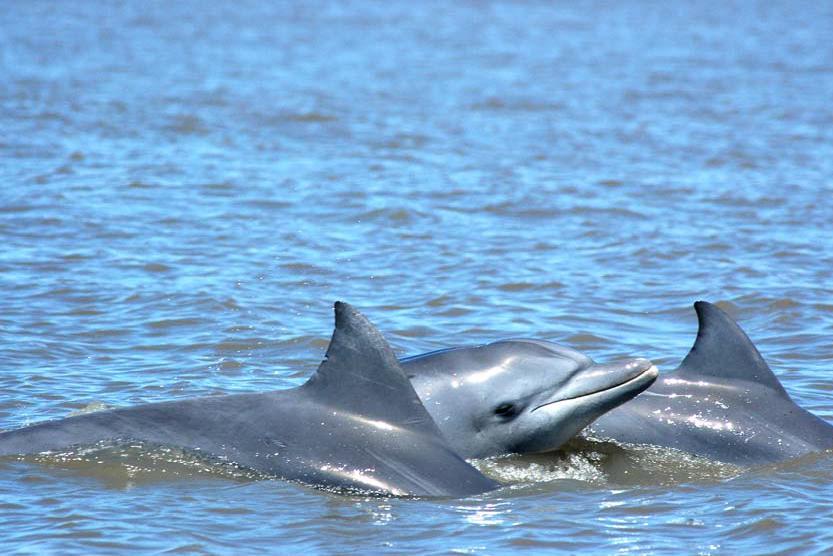Eduardo Secchi
The aim of this project is to identify the parameters that may influence the preferential areas utilized by the dolphins and to verify the areas and seasons of higher potential for overlap between dolphins and fisheries activities distribution along the year.

There is evidence that the small (n=80) bottlenose dolphin population resident to the Patos Lagoon estuary is being impacted by fishing operations. Until recently bycatch was suspected to be a minor problem to this population, however, since 2002 there was a marked increase in the number of dolphins found dead on the beach, many of which presenting net marks or mutilated body parts. During field work, two dolphins were photographed entangled alive in nets.
The aim of this project is to identify the parameters that may influence the preferential areas utilized by the dolphins and to verify the areas and seasons of higher potential for overlap between dolphins and fisheries activities distribution along the year. To reach the results we will make two kinds of surveys twice a month conducted from an aluminium boat, inside the estuary and ten kilometres for each side out of the Patos Lagoon bar.
The Habitat use surveys will collect information on physical variables (e.g. depth, salinity, temperature, and water transparency) along pre-determined transects in the area. When dolphins are sighted, data on time, GPS position, group size, composition and behaviour will be taken before approaching. Once data are collected the observation will be restarted as quick as possible. The Fishing activities surveys will take place along the same transects and the data to be collected include net size, type and location.
If our suspicious that this small resident population is collapsing due to unsustainable level of bycatch is proved correct through a Population Viability Analysis, results produced after this project can be used to elaborate a tentative guideline to orientate the Brazilian Agency for Environment (IBAMA) in designing local conservation plans.
The identification of priority areas where fishing activities is prohibited or regulated can be a product of this project. For example, a sanctuary or marine protected area could be established based on information about preferential habitat and dolphin and fisheries overlapping patterns. Moreover, because the proposed conservation strategies will be based on scientific data, if enforced, they are expected to reduce the number of dolphins annually killed in fishing operations.